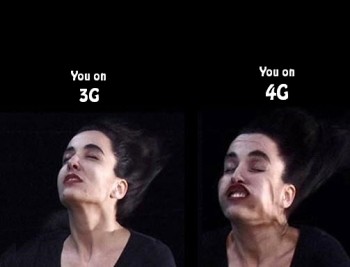
Study: AT&T’s LTE network faster, but Verizon’s footprint tops all
In another episode of “news you probably already knew,” RootMetrics carried out a study to see which carrier had the “best” 4G networks. Best can be defined a number of ways, be it by speed, availability, reliability and more. Fortunately, the 77 or so markets the tests were carried out in took all of that into account, and what they found wasn’t anything we didn’t already know from our own personal experiences (and, well, the claims put out there by the carrier themselves).
AT&T actually came out just slightly ahead of Verizon went it came to LTE speeds, as the GSM-based carrier averaged 18.6 megabits down and 9 megabits up. Ma Bell topped off at a maximum of 57.7 megabits down and 19.6 megabits up. Verizon had slightly slower averages in the download and upload departments with 14.3 megabits and 8.5 megabits respectively, and while Verizon’s top download speed of 49.3 megabits wasn’t enough to beat AT&T, it did enjoy a small win over AT&T in the uploads with 19.7 megabits.
That said, it’s imperative to note the size differences between the two. Verizon has obviously gotten a nice head start as it’s been building its LTE network with aggressive haste since 2010. Of the 77 markets tested, Verizon’s LTE signal could be found in every last one of them, while AT&T enjoyed a respectable 47. This gave Verizon an impressive 93.2% connection rate compared to just 81% for AT&T and 50% for Sprint. Some suggest Verizon might even be able to compete with AT&T if the latter’s network had as much congestion as the former’s, but until they match up in size we can’t say for sure.
Where AT&T didn’t have LTE it still had HSPA+, which — while not nearly as fast as LTE — is a good deal faster than most competing 3G connections (yes, we do still consider HSPA+ to be 3G despite what AT&T’s marketing department would have you believe).
Sprint took third place with its LTE network, as it saw average speeds of 10.3 megabits down and a paltry 4.4 megabits up. Those numbers topped out at 32.7 megabits and 9.9 megabits, respectively, and it was only available in five of the 77 markets. Sprint has been markedly slower than its bigger competitors in rolling out its 4G LTE network, but at least rollouts haven’t come to a complete standstill like they did when WiMax was still Sprint’s forte.
And then there’s T-Mobile, of course, who hasn’t quite launched LTE yet. The signal has gone live in a couple of markets, sure, but there aren’t any devices to take advantage of any of it. Still, its HSPA+ network has been treating customers quite fine as of late and it was able to achieve averages of 7.3 megabits down and 1.5 megabits up in RootMetrics’ testing.
You can check out more of the comprehensive results over at RootMetrics, and let us know if their findings match up to what you’ve noticed in everyday life on these carriers’ networks. Let’s hope by 2013’s end the playing field is a lot more even.